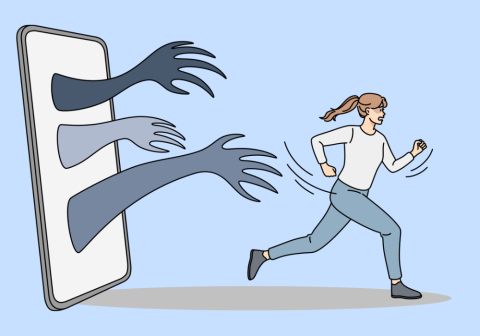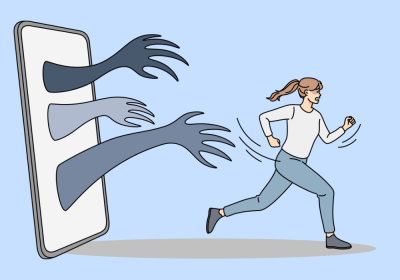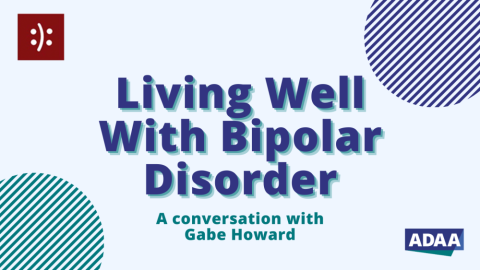What is Hoarding Disorder?
Hoarding Disorder occurs when a person has difficulty discarding items that have no apparent use or value to them. The retaining of these possessions results in excessive clutter and impairs the functioning of the person’s living space and, as a result, can harm relationships with others, especially those in the home or wanting to visit.
Typically, there are three reasons people save these items – sentimental value, an intended use or function, and intrinsic beauty. Although these valuations underlie the rationale for why most people save things, for people with Hoarding Disorder, the value attached to possessions is applied more broadly and experienced more intensely and can reach a point where the individual items are lost within the clutter and the individual’s worry about their possessions has overtaken their ability to live comfortably.
In many cases, people with Hoarding Disorder also struggle with acquiring, whether it’s collecting free items, making purchases at discounted prices, or inheriting possessions from others.
How is Hoarding Disorder Diagnosed?
One of the challenges of diagnosing Hoarding Disorder is that it’s rarely an independent, self-motivated decision to seek treatment. There is often encouragement or even intervention from loved ones concerned about the safety, wellbeing, and functioning of the individual. With Hoarding Disorder, there is a higher likelihood than OCD for a person to have poor insight, and that can also be a contributing challenge to proper diagnosis.
As compared to other anxiety disorders, there seems to be more shame and embarrassment related to Hoarding Disorder, with a fear of being judged by the community. This can perpetuate a secrecy around hoarding behaviors and deter individuals from seeking assistance.
In the United States, diagnosing Hoarding Disorder is based on criteria set forth by the Diagnostic and Statistical Manual of Mental Disorders (DSM). Its current edition, the DSM 5-TR, sets forth four primary criteria for the diagnosis of Hoarding Disorder – persistent difficulty parting with possessions regardless of value, a perceived need to save items, accumulating of items that has resulted in significant clutter, and that the behavior and/or clutter are time-consuming or cause clinically significant distress or impairment in various areas of functioning, including work, school, or social life.
Who Gets Hoarding Disorder?
- Approximately 80%-90% of people with Hoarding Disorder also struggle with excessive acquisition (DSM-5-TR)
- Rates of Hoarding Disorder vary greatly due in part to a lack of self-disclosure and awareness about the disorder, but range from 1.5% to 6% (DSM-5-TR)
- Symptoms often first emerge before the age of 19, although typically do not seek treatment until their 50s, despite the clinically significant impairment often occurring by 30s (DSM-5-TR)
How is Hoarding Disorder Treated?
Hoarding Disorder is often difficult to treat and can take years. This is due to several factors including low motivation, poor insight, significant clutter accumulation, and difficulty changing behaviors when the person has been engaging in them for decades. The high rate of co-occurring mental health diagnoses, including depression, Generalized Anxiety Disorder, and executive functioning deficits, can complicate treatment.
Although there is no single evidence-based treatment for Hoarding Disorder, there are several therapies that have shown to be impactful.
Motivational Interviewing can aid a person in getting started with the process of decluttering, which often feels extremely overwhelming, as well as staying engaged in treatment.
The crux of treatment is a cognitive behavioral therapy protocol specifically designed for Hoarding Disorder. This includes understanding the root causes of a person’s difficulties with parting with items, learning how to reduce acquiring, developing decision-making skills regarding saving and discarding, and changing beliefs about possessions.
When creating a multidisciplinary treatment team, it is important to ensure that all service providers are knowledgeable about Hoarding Disorder and related co-occurring issues. This team may be comprised of clinicians, prescribers, professional organizers, case managers, community organizations, and family members.
Professional organizers can be integral to the physical decluttering process; however, they are not clinically trained to treat Hoarding Disorder and cannot provide treatment for the cognitive and emotional components of the disorder. When collaborating with professional organizers, it is important to ascertain their scope of training and experience with Hoarding Disorder so that they can effectively contribute to helping the individual regain control of their space.
Hoarding Resources:
- Compulsive hoarding comes into greater focus since pandemic, UPI, Simon Rego, PsyD, ABPP, and David Tolin, PhD
- January/February Issue, Piling Up - Unpack Ideas About Hoarding Disorder, CMA Today Karen Cassiday, PhD and Fugen Neziroglu, PhD, ABBP, ABPP
- American Psychiatric Association - What is Hoarding?
- IOCDF - Hoarding Fact Sheet
















